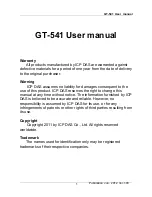
MultiVoice Gateway for the MAX— User’s Guide
Preliminary November 23, 1998
9-1
9
Configuring OSPF Routing
This chapter covers the following topics:
Introduction to OSPF
OSPF (Open Shortest Path First) is the next generation Internet routing protocol. The Open in
its name refers to the fact that OSPF was developed in the public domain as an open
specification. The Shortest Path First refers to an algorithm developed by Dijkstra in 1978 for
building a self-rooted shortest-path tree from which routing tables can be derived. This
algorithm is described in “The link-state routing algorithm” on page 9-8.
RIP limitations solved by OSPF
The rapid growth of the Internet has pushed Routing Information Protocol (RIP) beyond its
capabilities, especially because of the following problems:
Introduction to OSPF . . . . . . . . . . . . . . . . . . . . . . . . . . . . . . . . . . . . . . . . . . . . . . . . . . . 9-1
Configuring OSPF routing in the MultiVoice Gateway . . . . . . . . . . . . . . . . . . . . . . . . 9-10
Administering OSPF . . . . . . . . . . . . . . . . . . . . . . . . . . . . . . . . . . . . . . . . . . . . . . . . . . 9-14
Problem
Description and solution
Distance-vector metrics
RIP is a distance-vector protocol, which uses a hop count to
select the shortest route to a destination network. RIP always uses
the lowest hop count, regardless of the speed or reliability of a
link.
OSPF is a link-state protocol, which means that OSPF can take
into account a variety of link conditions, such as the reliability or
speed of the link, when determining the best path to a destination
network.
15-hop limitation
With RIP, a destination that requires more than 15 consecutive
hops is considered unreachable, which inhibits the maximum size
of a network.
OSPF has no hop limitation. You can add as many routers to a
network as you want.
















































